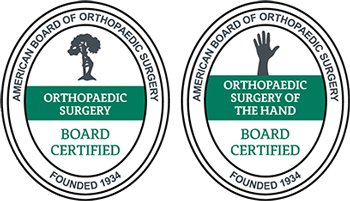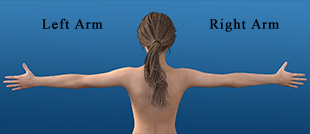Arthritis Surgery in Hands Wrists and Elbows
Contents
What is Arthritis Surgery?
Arthritis is a chronic condition that causes pain, stiffness, and limited mobility in the joints. While non-surgical treatments such as medication, physical therapy, and lifestyle modificationscan help manage the symptoms, in some cases, surgery may be the best option to regain joint function and improve quality of life.
In this article, we take an in-depth look at arthritis surgery, a procedure that can help alleviate the debilitating effects of arthritis and restore mobility and function to the affected joints. We will explore the different types of arthritis surgery when it’s necessary, how it’s performed, and why you should consider The Hand and Wrist Institute for your arthritis surgery needs.
A joint synovectomy usually provides only temporary relief. An joint replacement is a procedure that involves replacing a joint with an artificial joint made of a metal such as titanium in the wrist and elbow or the fingers using silicone or a metallic pyrocarbon implants, or removing the joint and replacing with a tendon from your own body such as with basilar thumb arthritis.
Types of Arthritis Surgery
Arthritis surgery encompasses a range of procedures designed to relieve pain, improve mobility, and improve the quality of life for people with arthritis. Here are the main types:
Joint Replacement Total Joint Replacement (Arthroplasty)
Total joint replacement is reserved for cases of severe osteoarthritis, rheumatoid arthritis, or other forms of inflammatory arthritis that have caused significant joint damage. It’s often used for resolving arthritis in the hips, knees, shoulders, and elbows. During this procedure, the surgeon replaces the damaged or diseased joint with a prosthetic implant, made of metal, plastic, or ceramic.
Partial Joint Replacement
Partial joint replacement is suitable for patients with arthritis that affects only one part of the joint. For example, unicompartmental knee arthritis, where the damage is confined to one side of the knee joint. The procedure involves replacing only the damaged parts of the joint with prosthetic components and preserving the healthy portions of the joint.
Joint Fusion (Arthrodesis)
Joint fusion, or arthrodesis, is often used for severe arthritis or joint instability that hasn’t responded to other treatments. It’s often used for joints like the ankle, wrist, or spine. The procedure involves surgically fusing the bones of a joint together, preventing movement at that joint.
Joint Resurfacing
Joint resurfacing is used for hip arthritis and treating younger, more active patients with arthritis. It preserves the healthy bone, improves function, and reduces pain. The procedure involves smoothing or replacing the damaged surfaces of a joint, preserving more of the patient’s natural bone and joint structure.
Arthroscopic Procedures
Arthroscopic surgery addresses a variety of joint issues, such as cartilage tears, ligament injuries, and inflammation associated with arthritis. It’s beneficial for diagnosing and treating specific joint issues, particularly in the early stages of arthritis or localized problems. The procedure involves inserting a tiny camera into the joint through a small incision, allowing the surgeon to see and treat joint problems.
Who should perform arthritis surgery?
Arthritis surgery should be performed by surgeons with knowledge of not only performing the surgery but when to perform such an aggressive reconstructive hand procedure. Dr. Knight’s knowledge of reconstructive upper extremity surgery, allows him to first make sure all conservative treatment has been exhausted and then carefully assess your needs in activities of daily living, work, hobbies and sports to come up with a solution that is right for you.
MCP joint replacement of all finger on the left hand of a patient with rheumatoid arthritis compared to right side prior to replacement.

When Is Arthritis Surgery Necessary?
Arthritis surgery is typically only recommended when more conservative treatments are no longer effective. The following symptoms may indicate a need for surgery:
- Severe and persistent pain.
- Significant joint deformity.
- Limited mobility.
- Non-surgical treatments have failed.
The Surgical Process
Here is the general process you can expect if you’re undergoing arthritis surgery:
Pre-operative Preparations
You will undergo a comprehensive medical evaluation, including a review of your medical history, physical examination, and diagnostic tests (e.g., X-rays or MRI) to assess the extent of the joint damage. The surgeon will discuss the benefits, risks, and alternatives to surgery with you, answering any questions or concerns. You’ll receive instructions on pre-operative preparations, which may include discontinuing certain medications, fasting before surgery, and stopping smoking before the surgery. In some cases, the surgeon may recommend pre-operative physical therapy to improve joint strength, flexibility, and overall physical conditioning.
Surgical Procedure
You will be given an anesthetic (general, regional, or local) to ensure a comfortable and pain-free procedure. Once you’re under, the surgeon performs the planned arthritis surgery using the chosen approach, such as open surgery or minimally invasive techniques like arthroscopy.
The surgeon will remove or repair the damaged joint components and insert prosthetic implants, if necessary, to restore joint function and stability. In joint fusion procedures, the surgeon will fuse the bones of the affected joint to prevent motion and reduce pain. Once complete, the surgical team will close up the incisions using sutures or staples and apply sterile dressings.
Post-operative Care and Rehabilitation
You may stay in the hospital for a few days to monitor and manage post-operative pain, wound healing, and mobility. Rehabilitation begins shortly after surgery, focusing on regaining joint mobility, strengthening muscles, improving flexibility, and gradually increasing weight-bearing activities. Physical therapy helps to restore joint function, reduce stiffness, and prevent complications, such as muscle weakness and joint contractures.
After you’re discharged, you’ll attend follow-up appointments with the surgeon to monitor progress and healing, and to address any concerns or complications. Our team will advise you regarding at-home care, such as wound care, restricting activities, and when you can resume daily activities. It’s important to follow these post-operative instructions to achieve a successful recovery.
Benefits of Arthritis Surgery
Arthritis surgery offers plenty of potential benefits for patients suffering from debilitating joint pain and functional limitations. Here are some of the key advantages:
Reduced or eliminated chronic joint pain.
- Improved mobility and range of motion.
- Increased independence.
- Improved overall quality of life.
It’s important to choose experienced and skilled surgeons for arthritis surgery to maximize the chances of a successful outcome and minimize the risk of complications. Surgeons with specialized training and expertise in arthritis surgery can provide personalized treatment plans tailored to your unique needs.
Why Choose The Hand and Wrist Institute?
At The Hand and Wrist Institute, our surgeons are renowned for their expertise and experience in performing arthritis surgeries, specializing in the intricate complexities of hand and wrist conditions. Committed to excellence, our surgeons use state-of-the-art facilities and advanced surgical techniques to deliver positive outcomes for patients with arthritis-related joint issues.
From common surgical treatments to specialized forms of arthritis surgery, our team is dedicated to providing personalized care and support throughout the entire treatment process. Patients can trust our surgeons’ skill and dedication to restoring function, relieving pain, and improving quality of life.
Take the First Step Toward a Pain-Free Life
Take control of your health and explore your arthritis surgery options with the expert care team at The Hand and Wrist Institute. Our experienced surgeons specialize in treating hand and wrist arthritis, using advanced techniques and state-of-the-art facilities to deliver exceptional results. Whether you’re experiencing chronic pain, stiffness, or limited mobility, our team is here to help you regain function and find relief. Contact us today to discuss your treatment options and take the first step toward a pain-free future.
Animated Videos
Disclaimer
HandAndWristInstitute.com does not offer medical advice. The information presented here is offered for informational purposes only. Read Disclaimer

























